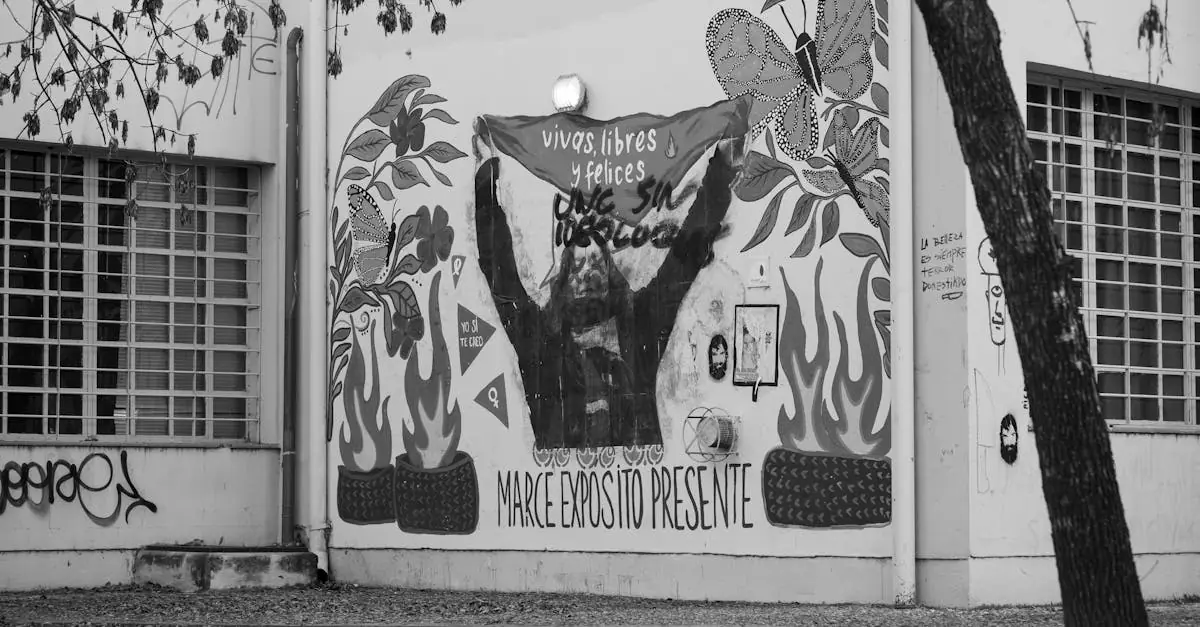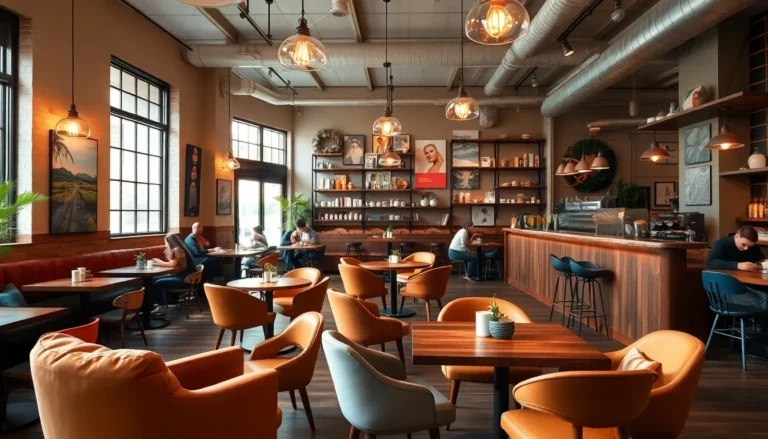Table of Contents
ToggleIn a world where distractions lurk around every corner, flow-enhancing design emerges as the superhero we never knew we needed. Imagine a workspace that not only boosts productivity but also makes you feel like you’re gliding through tasks like a hot knife through butter. It’s not magic; it’s design that understands how to optimize your experience, keeping you in the zone without the usual bumps and bruises.
What Is Flow-Enhancing Design?
Flow-enhancing design refers to the strategic arrangement of elements within a workspace to promote productivity and maintain focus. This design methodology addresses the various distractions that impede effective work. By creating an environment that fosters mental clarity, individuals can engage with their tasks more seamlessly.
Effective flow-enhancing design incorporates layout, lighting, color, and sound, among other factors. These components work together to reduce interruptions and create a sense of harmony. Layout matters; an open layout encourages collaboration while partitioned spaces can aid in concentration.
Lighting plays a crucial role in enhancing mood and boosting energy. Natural light is particularly beneficial, as it reduces eye strain and elevates overall well-being. Additionally, utilizing adjustable artificial lighting allows individuals to customize their work environment according to their needs.
Color selection significantly impacts productivity as well. Soft, neutral tones often promote a calming atmosphere, while vibrant colors can invigorate and stimulate creativity. Meanwhile, sound management shouldn’t be overlooked. Incorporating soundproofing elements or utilizing ambient noise can help minimize auditory distractions.
Incorporating ergonomic principles is essential in flow-enhancing design. Comfortable furniture promotes better posture and reduces fatigue, allowing employees to work longer without discomfort. Furthermore, integrating technology in a user-friendly way ensures that tools and resources are easily accessible, reducing time lost searching for necessary items.
Ultimately, flow-enhancing design creates a workspace where individuals can focus and thrive. Implementing these principles leads to increased productivity and enhanced job satisfaction, paving the way for successful outcomes.
Key Principles of Flow-Enhancing Design
Flow-enhancing design relies on several core principles that optimize productivity and efficiency in workspaces.
User-Centric Approach
A user-centric approach places individuals at the heart of the design process. This principle involves understanding user needs and preferences. Different work styles necessitate varied setups, such as collaborative areas versus quiet zones. By prioritizing employee feedback, organizations can create an environment that caters to diverse workflows. Ergonomic furniture reduces physical strain while intuitive technology simplifies interaction with tools. Strategic placement of resources ensures everything is easily accessible, eliminating flow disruptions.
Visual Hierarchy
Visual hierarchy enhances user experience by organizing information clearly. Effective use of space guides attention, making navigation effortless. Designers can emphasize key elements, using size, color, and placement. Larger images and bold headings signal importance, while a cohesive color palette unifies the workspace. Implementing clear signage reduces confusion and improves orientation. An uncluttered layout fosters focus, helping individuals prioritize tasks effectively. When the visual hierarchy is carefully considered, productivity often improves significantly.
Benefits of Flow-Enhancing Design
Flow-enhancing design provides significant advantages in workspace efficiency and user satisfaction. Organizations that implement this methodology experience noticeable improvements in productivity and overall workplace morale.
Improved User Experience
Enhanced user experience results from thoughtful design that prioritizes individual comfort and needs. Ergonomic furniture ensures proper posture, minimizing discomfort during long work hours. Spaces designed for various activities support diverse workflows, allowing for easy transitions between tasks. Natural lighting elevates mood, leading to a more inviting atmosphere. A well-organized layout reduces stress by eliminating clutter and enabling straightforward navigation. Each of these elements contributes to a workspace that feels intuitive and accommodating.
Increased Engagement
Engagement rises significantly in environments that incorporate flow-enhancing design principles. Employees feel more connected when their workspace supports collaboration and creativity. User-friendly technology simplifies access to vital resources, fostering a seamless work process. Clear visual hierarchy directs attention where it matters most, allowing for quicker decision-making. Vibrant colors energize spaces, inspiring innovative thinking and enthusiasm. Collaboration zones equipped with comfortable seating encourage sharing ideas and teamwork, creating a dynamic workplace culture.
Examples of Flow-Enhancing Design
Exploring examples of flow-enhancing design showcases its effectiveness in boosting productivity and enhancing user experience.
Case Studies
Organizations like Google and IDEO demonstrate successful flow-enhancing design implementations. Google employs open layouts with natural light, fostering collaboration while allowing for quiet zones. At IDEO, they utilize flexible spaces that adapt to project needs, encouraging creativity and teamwork. Companies that prioritize listening to employee feedback report notable improvements in morale and productivity. Research from the Journal of Environmental Psychology indicates that workplaces maximizing natural elements lead to a 20% increase in employee satisfaction. Ultimately, these case studies illustrate the tangible benefits of thoughtful design.
Best Practices
Adopting best practices is essential for effective flow-enhancing design. Start with a user-centric approach, focusing on individual needs as different workflows require varied setups. Ensuring ergonomic furniture promotes comfort and reduces fatigue during work hours. Optimize lighting to balance natural and adjustable sources, improving mood and energy levels. Incorporate vibrant colors in collaborative spaces while using calming tones in areas designated for concentration. Managing sound through acoustic solutions minimizes distractions and maintains focus. Lastly, maintaining a clutter-free layout supports effortless navigation and encourages productivity.
Flow-enhancing design plays a pivotal role in transforming workspaces into environments that boost productivity and user satisfaction. By prioritizing elements like layout lighting and ergonomics organizations can create spaces that cater to diverse work styles while minimizing distractions.
The positive impact of thoughtful design extends beyond individual comfort; it fosters collaboration and creativity among teams. As seen in successful case studies like Google and IDEO these principles lead to tangible improvements in workplace morale and efficiency.
Investing in flow-enhancing design not only optimizes the user experience but also cultivates a culture of innovation and engagement. Embracing this approach can ultimately reshape how individuals interact with their work environments leading to sustained productivity and satisfaction.




